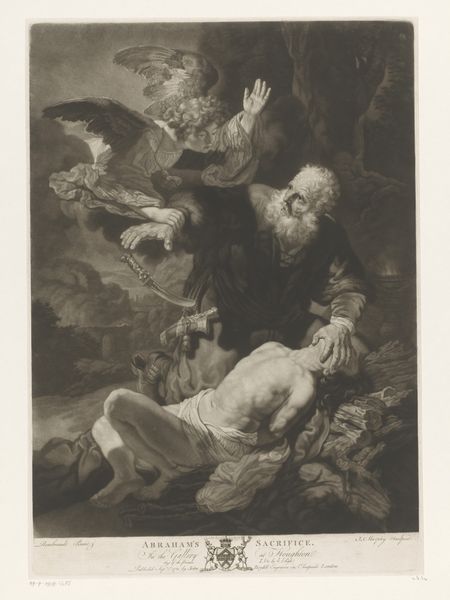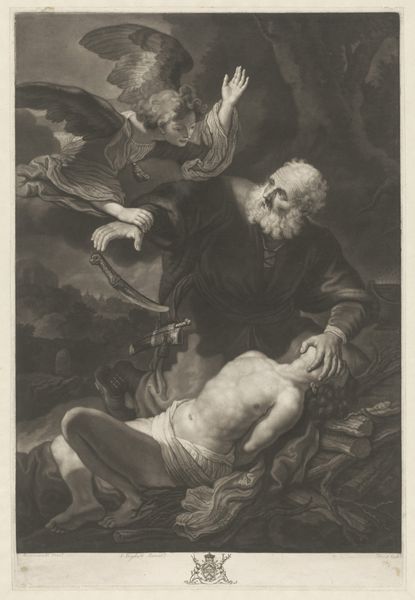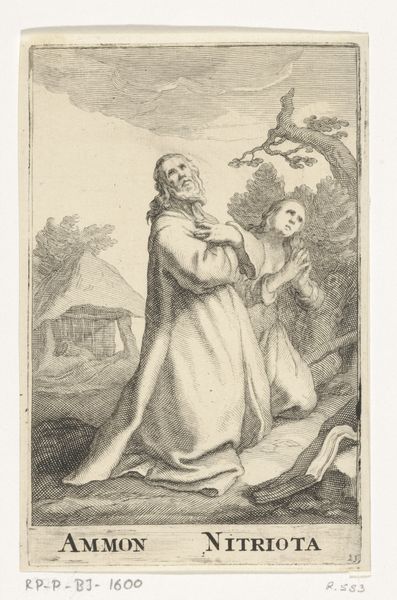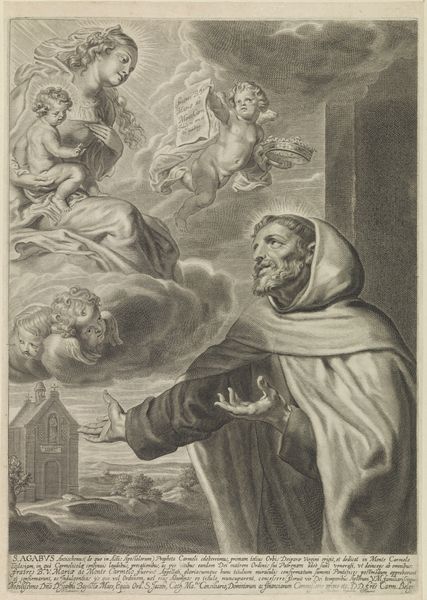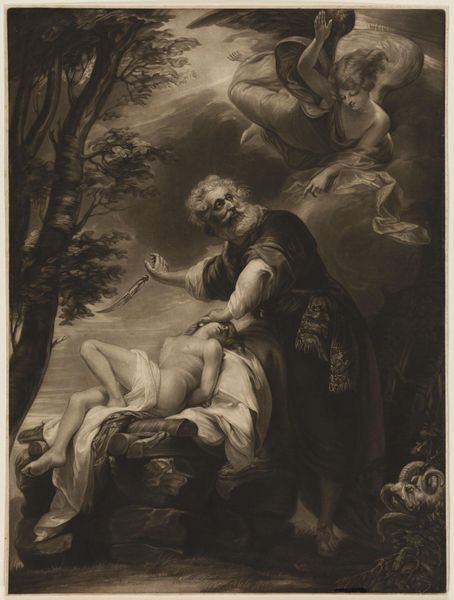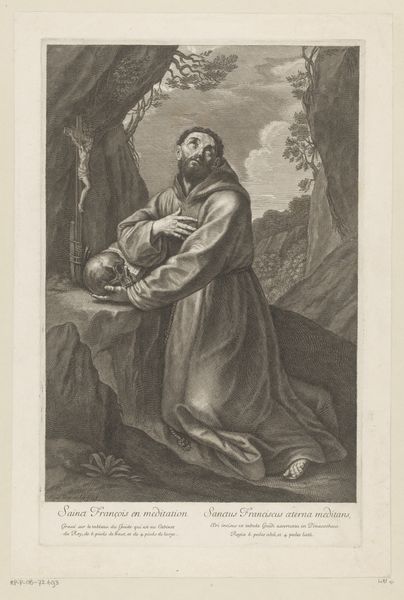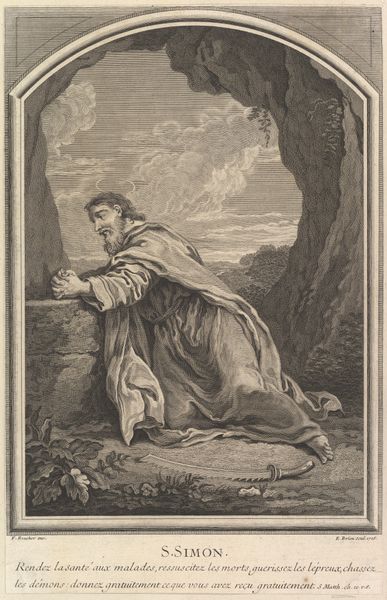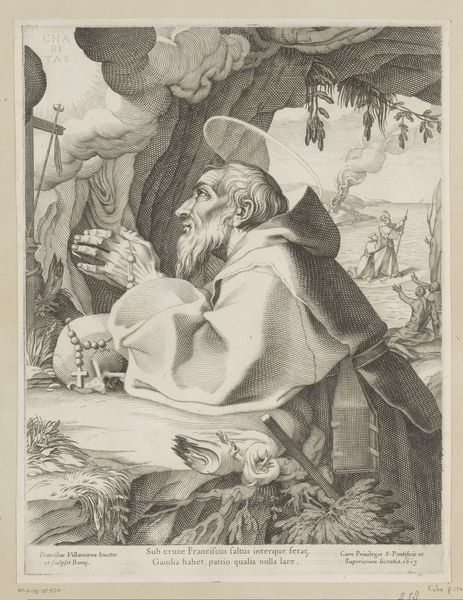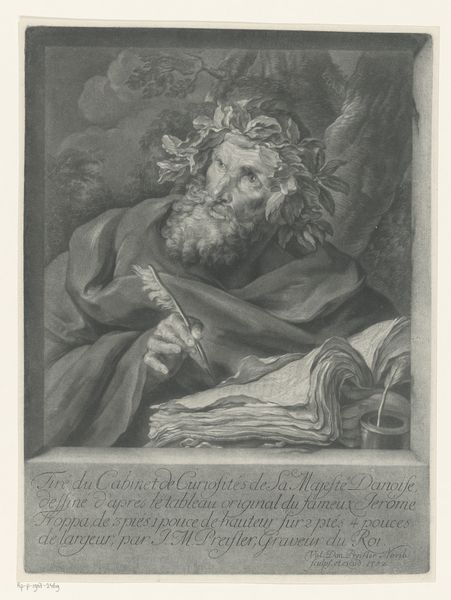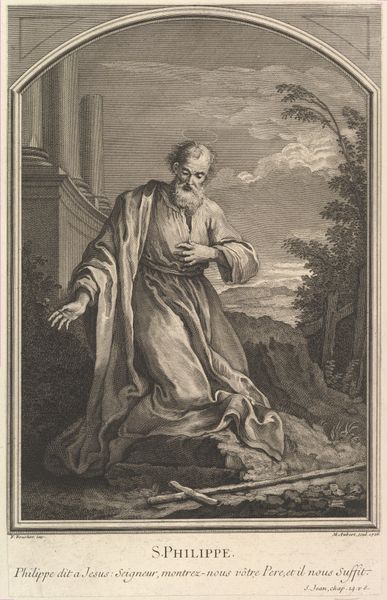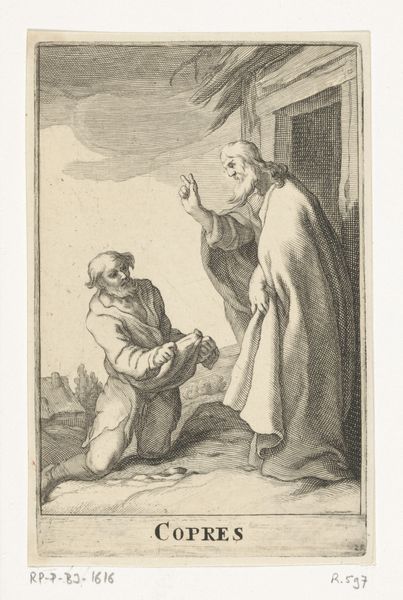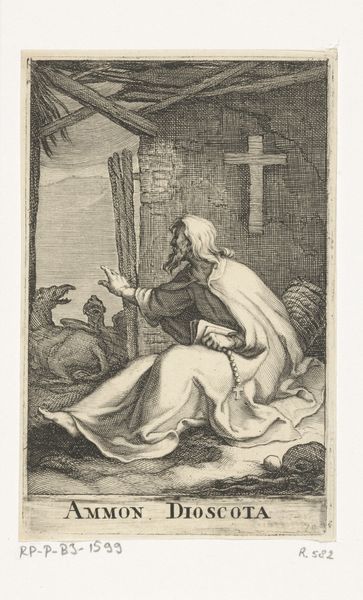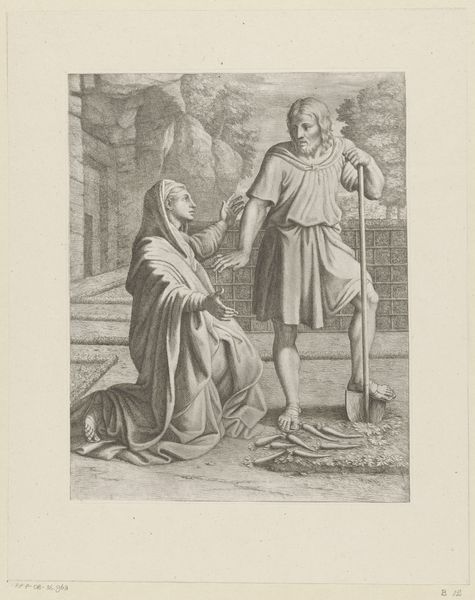
print, engraving
#
portrait
#
baroque
# print
#
figuration
#
historical photography
#
19th century
#
engraving
Dimensions: height 503 mm, width 352 mm
Copyright: Rijks Museum: Open Domain
Curator: Standing before us is the print, “Kneeling Saint Francis of Paola in Prayer,” engraved by James McArdell around the 1750s, after an earlier painting. Editor: It's so Baroque! Look at the swirling clouds and those cherubic angels – pure drama! The way the light catches St. Francis's face gives him such a look of intense devotion, even kind of longing. Curator: McArdell has really captured that High Baroque dynamism, hasn't he? Saint Francis of Paola was known for his miracles and his humility. He founded the Minim Friars, and this print really leans into that piety, even a little idealizing the poverty perhaps? Editor: Poverty... Well, that depends on your point of view, doesn't it? Monastic orders occupied a very powerful social position, that isn't exactly aligned to popular narratives of sacrifice. I feel this engraving romanticizes religious devotion without necessarily interrogating those structures of power. That sea he’s miraculously crossing is also charged. In that period sea voyages equaled colonial enterprise. Is his apparent act of selflessness possibly obscuring other kinds of worldly dominion? Curator: I take your point about potential blind spots of devotion, yet, doesn't the engraving itself possess a tangible spiritual energy? Those little angels offer St. Francis protection. And they seem so joyous. This tension gives the scene such dynamism! He may have had wealth by proximity, but look at the Saint. Is he exploiting the social machinery, or, truly, beseeching divinity in an authentic way? This piece makes me wonder whether he actually found genuine solace? The piece resonates with me as deeply personal rather than propaganda. Editor: Well, perhaps both readings are legitimate, right? Baroque art often had the precise aim of uniting secular potency and devotional sincerity in service of religious and political aims. Whether it “worked” or not is in the eye of the beholder, as you are highlighting, of course. And our beholding it centuries later invites these conversations to surface. Curator: Absolutely, that's what makes discussing art so exhilarating! To hold multiple truths, seeing the work for its artistic elements while still understanding its historical, often contradictory, nature. Thank you. Editor: Indeed! Thank you, as well.
Comments
No comments
Be the first to comment and join the conversation on the ultimate creative platform.
